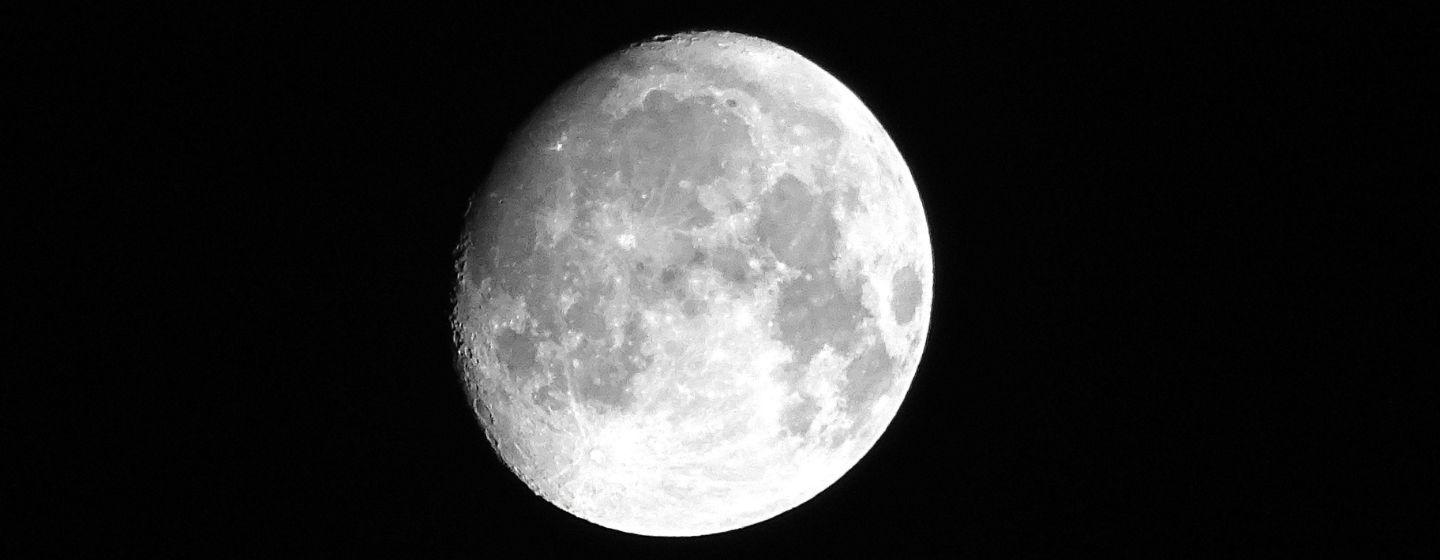WCU Professor Teams Up with NASA Again


The surface of the moon is covered with huge, dark spots visible from Earth. Those spots are known as maria, Latin for “seas.” Lunar maria have intrigued authors, artists, scientists and humans in general for centuries.
Now, Dr. Amy Fagan of Western Carolina University (WCU) has teamed up with NASA to study Ina, one of the best known lunar maria. Officially, Ina is known as an IMP, or Irregularly Shaped Mare Patch.
“We’ve got a full team from lots of different organizations and backgrounds coming together to work on this initiative,” said Fagan in a news release. “We’ve got some that are lunar geologists, some that have expertise in chemistry and those with expertise [on] age dating/morphology of these types of features. My expertise, and how I fit into the team, is general geology of the moon and the specific formation of samples.”
The dark surfaces of the moon reveal its volcanic past. Those ancient, hardened volcanic seas are made of basalt, which reflects less light. Scientists believe they were created in the aftermath of ancient meteor impacts that triggered volcanoes. The craters filled with lava. Eventually, the lava cooled, and the flat flood basalts formed smooth lunar maria. The lunar highlands look brighter because they’re made of more reflective rocks. While scientists know the moon has a volcanic past, they don’t know when that volcanic activity occurred.
“There’s two different theories about its [Ina’s] formation,” said Fagan. “Some people think that based on some of its morphology that it is around 33 million years old whereas other people think it is about 3 billion years old. That is a big discrepancy, and we do not yet have a good understanding about how these irregular mare patches formed.”
NASA hopes its new DIMPLE instrument suite will help scientists find out.
DIMPLE stands for Dating an Irregular Mare Patch with a Lunar Explorer. The DIMPLE instrument package will be carried by a rover to investigate the Ina IMP, an area of the moon discovered in 1971 in Apollo 15 orbital images.
The rover with the $50 million instrument package will be carried on a commercial lunar lander/rover to be selected by NASA. The suite of instruments is designed to determine if the moon has been volcanically active in the geologically recent past. DIMPLE will use cameras and radioisotope-based dating to study the mare’s age and composition.
DIMPLE is scheduled to arrive on the moon in 2027. However, NASA’s partnerships with private industry to deliver instruments to the moon took a serious hit in January 2024. That’s when a moon lander built and operated by Pittsburgh-based aerospace company Astrobotic suffered a malfunction soon after launch and crashed back to Earth.
DIMPLE will not return lunar samples to Earth. Instead, it will use its instruments to age-date lunar samples as well as study the chemistry and characterization of the rocks.
Because of her knowledge of lunar geology, Dr. Fagan previously worked with NASA as a consultant on the moonwalking test mission team for Artemis III, which is part of NASA’s Artemis program to return to the moon. Fagan helped with planning which lunar formations astronauts should be prioritized for study during their mission.
The entire Artemis program has been delayed by one year, with a crewed mission now scheduled to orbit the moon in 2025 and a moon landing now planned for 2026.
“While I was part of the moonwalking test mission team and helping with astronaut simulations, this has been a different experience because there will not be humans on the surface, it will be robotic instrument suites,” said Fagan. “NASA has been supporting robotic initiatives since the ’60s and ’70s in addition to the astronaut-led trips to the moon, so I am proud to be part of continuing this work.”
Click here to read more about Dr. Fagan’s work with NASA.